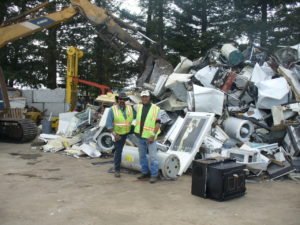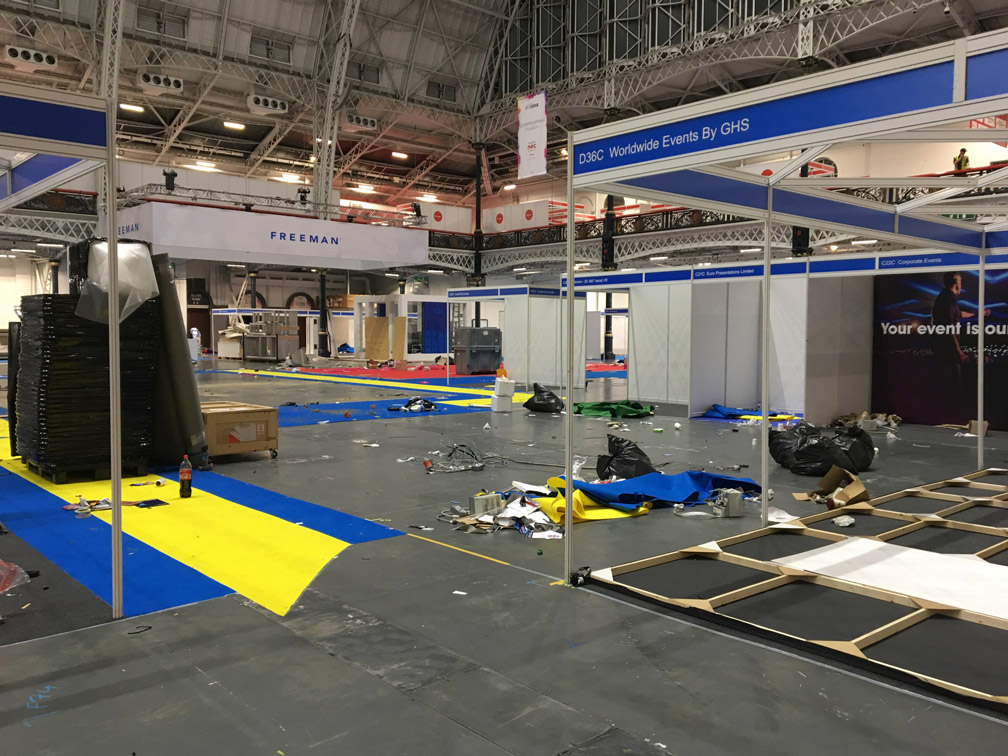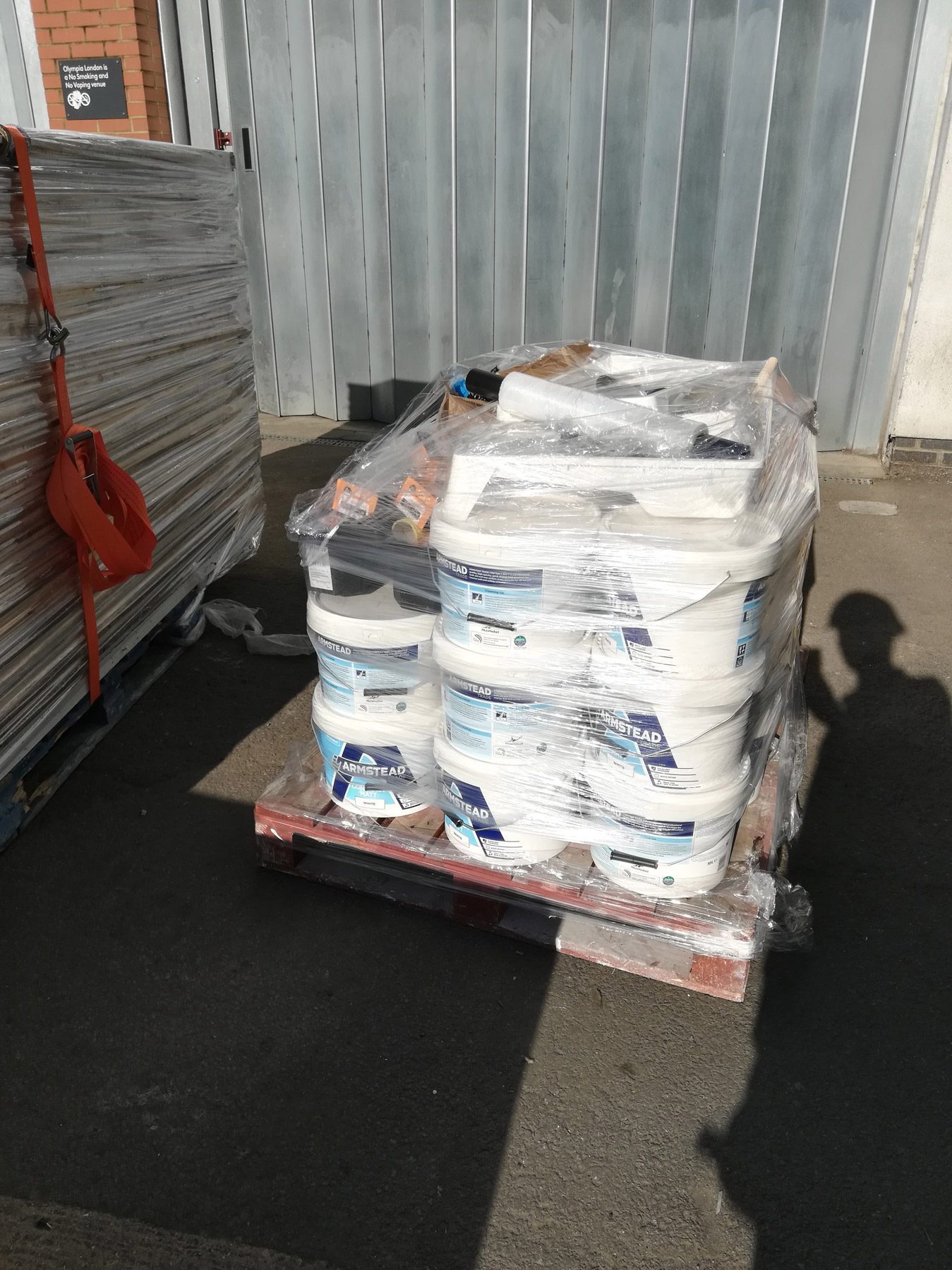The Start-up willing to make the event industry more sustainable celebrates its first anniversary !
**Version en français plus bas**
De start-up die de evenementenwereld wil veranderen, wordt 1 jaar!
Konligo, een Belgische startup die innovatieve, inspirerende en duurzame stand structuren ontwikkelt voor alle soorten evenementen blaast zijn eerste kaarsje uit.
Even een terugblik naar het eerste jaar.
Konligo is de vrucht van een perfecte samenwerking tussen Aushim Koumar, een ex-doctoraatstudent aan de VUB en zijn twee proffen: Niels de Temmerman (wereldwijd gekend voor zijn kennis over schaarstructuren) en Tine Tysmans ( expert in structurele optimalisatie en modellering). Na 15 jaar onderzoek, is het doel van Konligo om de ontwikkelde theoretische modellen en de opgedane kennis om te zetten naar een eindproduct dat een elegante en duurzame oplossing biedt voor de problemen binnen de evenementensector.
Het eerste jaar op de markt is dan ook gekenmerkt door grote successen zoals de aanwezigheid op een internationale beurs in Londen die veelbelovende vooruitzichten heeft geopend. De structuren die ontwikkeld zijn door Konligo hebben al meerdere grote spelers verleidt zoals Easyfair & Alter Expo en hebben aangetoond dat het duurzame en verantwoorde argument niet per se een noodzakelijk synoniem is aan een hogere prijs of een verwaarloosde stijl.
“We hopen dat ons product en ons duurzaam initiatief de ogen opent van de spelers in de evenementenindustrie. Er zijn al een hele hoop initiatieven genomen, maar de sector investeert nog te vaak in het gebruik van eenmalige structuren omdat ze denken dat dit de enige manier is om het gewenste wow-effect te creëren. Ze zien nog niet het potentieel en de eindeloze mogelijkheden die gepaard gaan met duurzaamheid en herbruikbaarheid. “
Konligo is zijn eerste jaar door en blijft investeren in het onderzoek en de ontwikkeling naar nieuwe structuren die nog meer compact, modulair en fascinerend zijn. Deze producten zijn ontworpen om te voldoen aan de eisen van de markt, de bezoekers en die van onze toekomstige generaties.
Voor meer informatie, www.konligo.com / en abonneer op @Konligo op Twitter en Instagram
*******
La start-up qui veut révolutionner durablement le monde des salons et foires fête ses 1 an !
Konligo, la start-up Belge qui développe des structures de stand innovantes, inspirantes et durables pour tous types d’évènements et salons souffle sa première bougie. Retour sur cette première année.
Konligo est le fruit d’une parfaite collaboration entre Aushim Koumar, un doctorant à la VUB et ses deux professeurs: Niels de Temmerman (mondialement reconnu pour son expertise en structures ciseaux) et Tine Tysmans (experte en optimisation structurelle et modélisation). Après 15 ans de recherches, l'objectif de Konligo a été de passer de modèles théoriques, basés sur de l'ingénierie créative à un produit fini qui offre une solution élégante et durable aux problèmes rencontrés par secteur de l'événementiel.
Cette première année sur le marché a été marquée par de belles réussites telles que la présentation à un salon international de renom à Londres et a ouverts des perspectives très prometteuses.
Les structures développées par Konligo ont déjà séduit plusieurs acteurs majeurs comme Easyfair & Alter Expo et réussissent à démontrer que l’argument durable et responsable n’est pas nécessairement synonyme de prix plus élevé ou de style négligé.
“On espère que notre produit et notre démarche vont ouvrir les yeux aux acteurs de l’industrie des évènements. Beaucoup d’initiatives ont déjà été prises, mais ce secteur investit encore trop souvent dans de l’usage unique en pensant que c’est le seul moyen de créer l’effet waouh recherché. Ils n’arrivent pas encore à voir suffisamment les opportunités et possibilités qu’offrent le durable et le réutilisable” précise Aushim Koumar, le fondateur de la Start-up.
Konligo passe ce cap des 1 an et continue d’investir en recherche et développement afin de proposer de nouvelles structures, encore plus compactes, modulables et fascinantes. Ces produits sont conçus pour répondre aux exigences du marché, des visiteurs mais aussi à celles de nos futures générations.
Pour plus d’information, www.konligo.com / Et abonnez-vous à @Konligo sur Twitter
How to make events more sustainable?
Every year, trade and consumer shows generate 600.000 tons of waste. That represents 1 billion pounds and makes this sector the second-worst waste producer after construction.

Most of this waste comes from all the flyers, posters, plastic bags, catalogs or cheap samples that are offered to visitors. In addition, there is the plastic that protects the carpets during assembly and the carpet itself during dismantling, which in most cases will never be reused. The stand carpet is usually packed in bulk, and the carpet located in the communal spaces is recycled. As the size of the trade show increases -and the proportion of stands with customized design (or non-reusable stands) with it the quantity of hazardous and wood waste can raise tremendously.
Of course, there are some simple solutions to this problem. Since nowadays we are living in a very technological/digital world, some tools could be really helpful in solving waste reduction in trade shows and fairs. Most people have a smartphone and a good way to avoid any waste (especially paper) is to develop an application or to use a QR code to collect the clients’ data for example, instead of losing time, energy and paper if done by hand. A digital catalog is a good alternative too, and is even more useful since the client can get access to any information and go through all the products on a tablet. The exhibitors can also provide reusable bags and biodegradable or even reusable beverage and food containers (plates and cups made out of cardboard or bamboo for example).
Why going paperless?
Going paperless is a good way to reduce waste and expenses: you avoid sending paper invites and printed advertisement memos by creating online event pages, apps and registering people via email, social networks and websites. Moreover, it gives quicker access to all of the internet information since it’s accessible at any time. An example is e-tickets as a very good alternative to all the printed tickets: the customers have them directly on their phones and have their badge linked to them. The advertising of an event is also a big source of waste, that can be avoided by communicating on social networks and websites and not by sending printed documents.

What about the food?
Trying to know how many people are surely attending the event enables to better anticipate food quantities and avoid food waste. The leftovers and food waste can also be given to associations. In addition, an event can also improve its carbon footprint by keeping things as local as possible when it comes to food or features for the event.
Concerning the plastic waste due to stands?
When it comes to plastic use, events’ stands waste a lot. First of all, they are, in most cases, used for a one-time purpose. This means that afterwards they are thrown away and not reused. Moreover, stand builders often paint them directly on-site, generating a lot of chemical waste too. Conventional paints are not sustainable and can lead to health problems since they contain some toxic ingredients, but natural paints are a better solution. Natural paints have recycled, natural or bio-based content. Then to wrap and protect all the stand elements (structure, panels, etc.) companies often use a huge amount of plastic which they throw away, instead of keeping it for later and reuse it.

And regarding the lights?
For the lightning, LED lights are way better and save energy but it is also possible to lower power efficiency to avoid energy waste. A white screen is a very good investment to project all the content digitally and to avoid all the panels and printed posters that are commonly used to show data and information.
Other tips?
An easy way for a venue to go greener is to make sure to recycle all the waste generated during the event, or to hire volunteers who could collect waste. In addition, all the waste such as the structures, stands and leftovers products should be donated to interested organizations and charities. Finally, a partnership with public transport should be developed and car-sharing should be encouraged. Some venues even have an International Sustainability Certification, such
as Manchester Central or ACC Liverpool, and choosing one of those options enables to boost the credibility of a sustainable event.
To conclude, there are many ways to reduce the carbon footprint when organizing events, and it only takes a very simple action to act for the best of our planet!
Sources:
https://helloendless.com/sustainable-event-trend/
https://www.eventbrite.co.uk/blog/plan-a-green-event-ds00/
https://aushimkoumar.com/2018/12/21/the-new-trend-in-exhibition-stands/
https://www.sciencedirect.com/science/article/pii/S0956053X09000075
https://www.tsnn.com/blog/why-going-green-matters-your-next-tradeshow
https://globalwarmingisreal.com/2012/11/26/5-industries-that-need-way-more-eco-attention/
https://smashhitdisplays.com/blog/trade-show-news/trade-show-industry-creating-most-of-the-worlds-waste
http://www.enviropaedia.com/topic/default.php?topic_id=183
https://www.tickpick.com/a-guide-to-planning-green-events
